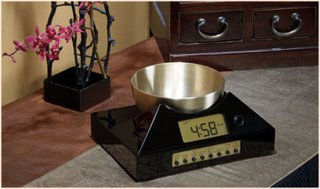
meditation in motion, walking mindfulness practice
Attention, multitaskers: Want to exercise and meditate at the same time? Try Breathwalk, a form of walking meditation that incorporates pranayama and mantra techniques from the Kundalini Yoga tradition. The late Yogi Bhajan introduced this practice to the West in the early 1970s. Since then, yoga students of all shapes and sizes have used it to improve their cardiovascular health, tone their nervous system, boost their energy, stabilize their moods, quiet mental chatter, and embrace the present moment. In its full form, Breathwalk is a five-step process that can take up to 60 minutes; here’s an abbreviated routine you can do in less than 20. Try it in a meadow, on the beach, in the woods, or, if you’re feeling adventurous, on a city street.
The Practice
Begin walking at a normal pace, observing your bodily sensations. Then tune into your breath. Are you breathing with your chest muscles or with your diaphragm? Is your breath shallow and erratic or smooth and deep? Noisy or quiet? Through your mouth or through your nostrils? Gradually refine your breath so that it becomes nasal, diaphragmatic, and free of noise and irregularities.
Now coordinate your breath with your stride, inhaling for four steps and exhaling for four steps. When this feels comfortable and automatic, begin to practice the following breathing pattern: Keeping your nasal passages and facial muscles relaxed, take four short staccato puffs of air through the nostrils—one puff for each step. (Your breath will be audible now; focus on the sound.) Essentially, you are dividing your inhalation into four segments that are synchronized with four consecutive steps. After the first puff, your lungs should be about one-quarter full; after the second, two-quarters full; after the third, three-quarters full; and after the fourth, four-quarters full.

zen stones
Without pausing, exhale in the same fashion, contracting the abdominal muscles and pushing the navel to the spine for four steps (and four segments of the out-breath), so that the final puff pushes the last quarter of air out of your lungs. Continue this pattern for five minutes, then walk and breathe normally for three minutes. As Gurucharan Singh Khalsa, senior student of Yogi Bhajan and co-author of Breathwalk, says, “It’s not about, ‘How far did I walk, how many calories did I burn, how much effort was expended?’ It’s about synchronizing the body, breath, and mind to the present moment, about experiencing a profound sense of connection with yourself and nature.”
Now, repeat the eight-minute practice. This time, as you synchronize your segmented breath with your stride, mentally say the mantra sa ta na ma—one sound for each step and each segmented breath. Repeat the mantra in coordination with the quartered breath for five minutes, then walk and breathe normally for another three.
“Practice for three days in a row and you’ll feel the energizing, focusing effects immediately,” Khalsa says. “If you do it for 40 days you can get really intimate with the technique. You can slip it into the cracks of your day to support you—that’s its purpose.”
adapted from Yoga International, by Shannon Sexton

Tibetan Meditation Timer with Brass Singing Bowl
Now & Zen
1638 Pearl Street
Boulder, CO 80302
(800) 779-6383
Posted in Bamboo Chime Clocks, Meditation Timers, Meditation Tools, mindfulness practice, Now & Zen Alarm Clocks, Zen Timepiece by Now & Zen, Zen Timers